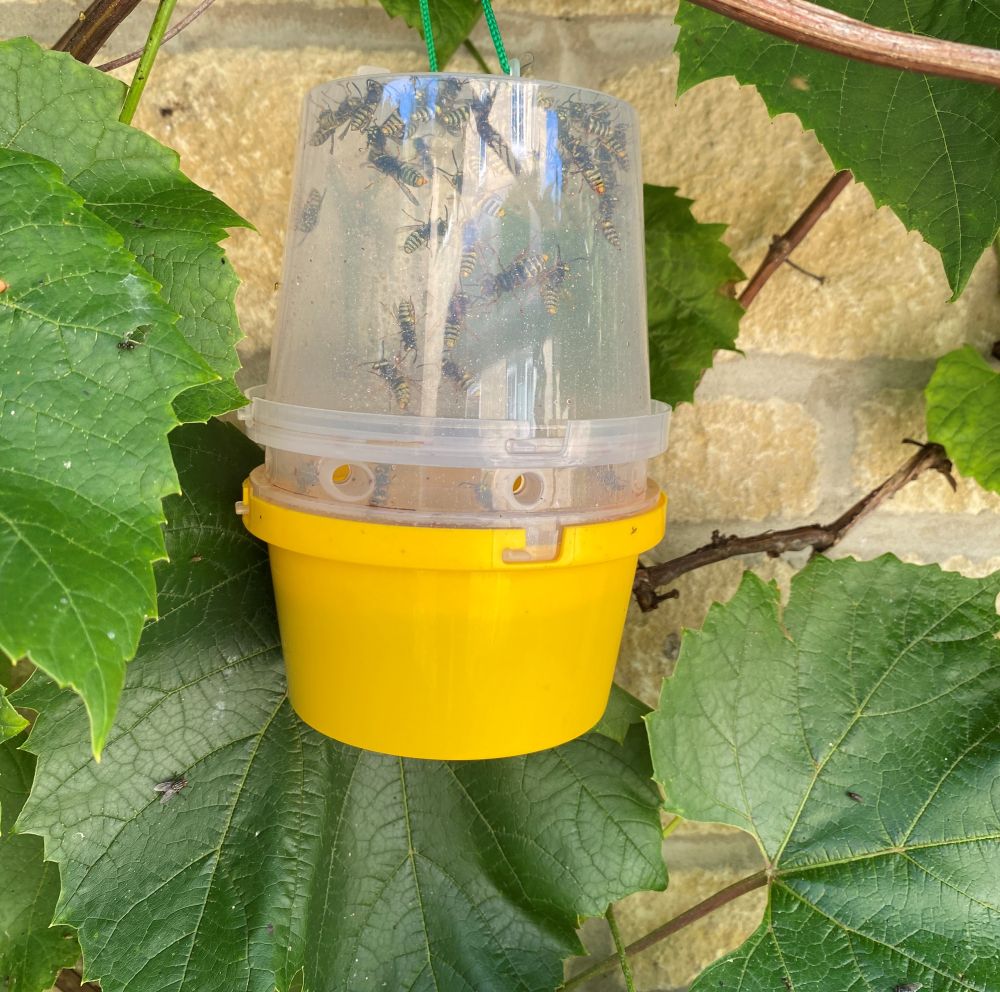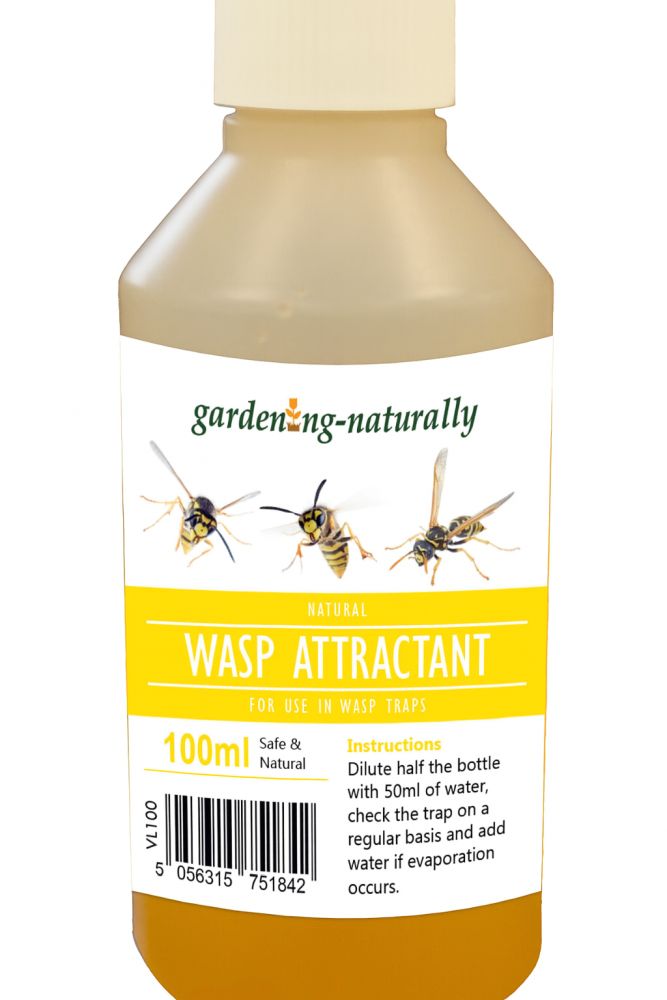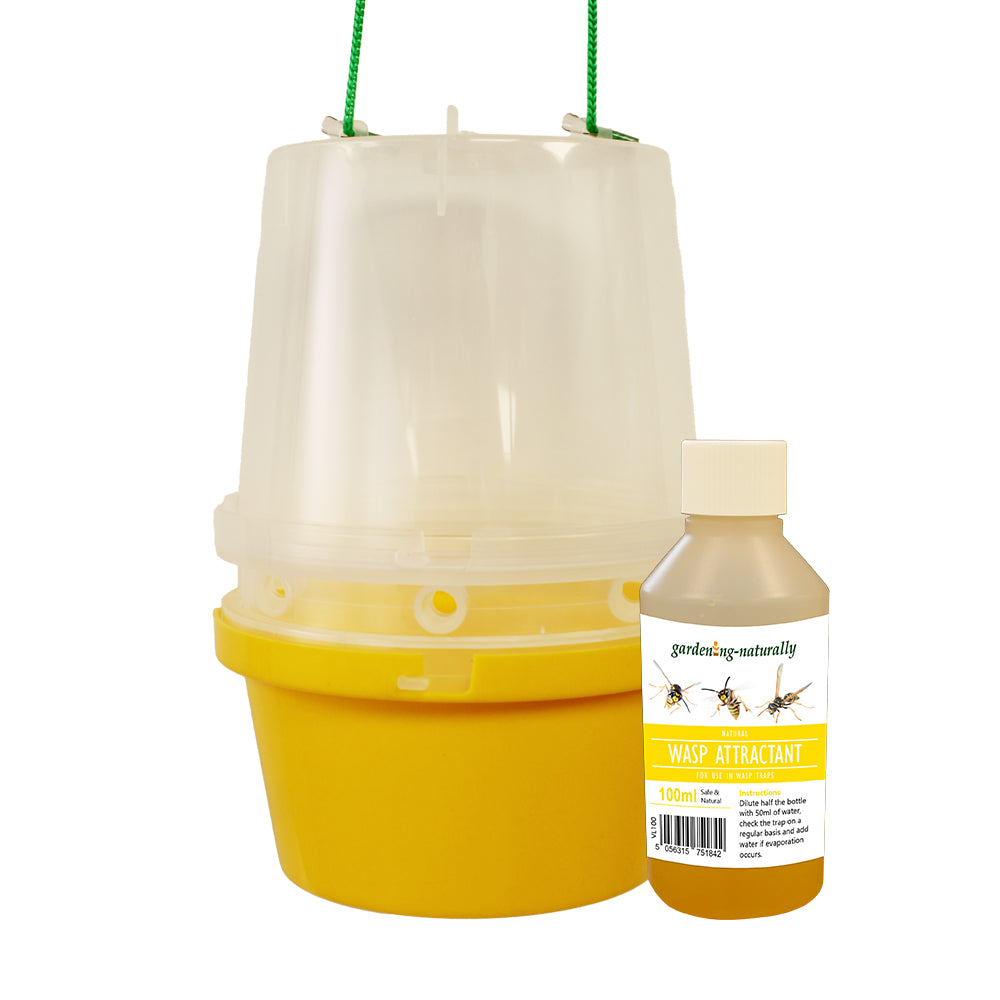Wasp Trap and 100ml Attractant
Wasp Trap and 100ml Attractant - Trap and 100ml Attractant is backordered and will ship as soon as it is back in stock.
This wasp trap is an effective way of catching large quantities of wasps and hornets in both domestic and commercial premises, gardens and patio areas. The trap and attractant when used together will lure in the wasps and hornets, where they become trapped, eventually drowning in the water/attractant mix contained within the trap.
Our attractant is species-specific ensuring that it will not attract bees, birds or other wildlife, chemical free and safe to use around children and pets.
Made from recyclable plastic, the wasp traps can be emptied, cleaned and reused, just replace the attractant and you have a brand-new trap, also easily stored out of season.
We recommend diluting the attractant on a 50/50 basis, if your are experiencing an active infestation then use a less diluted formula to maximise breaking the communication cycle preventing the infestation worsening.
Best used from May onwards, finishing in the early autumn to ensure maximum trapping rates for the aggressive wasps.
For a standard garden, 1-3 traps set up would be adequate coverage, larger gardens may need more traps to reduce the population of Wasps and Hornets.
To clean your trap simply empty contents into a bin and thoroughly rinse in clean water. Store the attractant in a cool dry place, out of direct sunlight.
How to use the Wasp Trap
- Hang or place the trap at least 5 metres away from seating, doors, or eating areas.
- Position traps near trees, bins, sheds, or garden edges where wasp activity is common.
- Use multiple traps for large gardens or areas with persistent infestations.
Attractant available separately or as part of your initial kit.
More information on how to trap wasps
Trap Dimensions: 14cm x 8cm x 8cm
What is the best location to place a wasp trap?
Position traps at least 5 metres away from seating areas, doorways, and food preparation zones. Ideal locations include near compost bins, fruit trees, garden edges, or other spots where wasps are commonly seen.
How often should I replace the attractant?
Replace the attractant every 2 to 3 weeks, or sooner if the trap fills up or the liquid becomes cloudy. Consistently fresh attractant ensures better trapping rates throughout the season.
Are wasp traps safe to use near pets and children?
Yes, this trap uses a species-specific attractant and contains no harmful chemicals. It can be safely used around children and pets when placed correctly and out of reach.
Do wasp traps reduce the risk of nests nearby?
Using wasp traps early in the season helps reduce the number of active wasps in your area, which may decrease the likelihood of nests forming close to your home or garden.
Will this wasp trap work for hornets as well?
Yes, the attractant used in this trap is designed to target both wasps and hornets, effectively capturing both without attracting bees or other wildlife.
Can I use the wasp trap indoors?
No, this wasp trap is intended for outdoor use only. It should be used in gardens, patios, or commercial outdoor spaces where wasp activity is visible.
How do I clean and store the wasp trap when not in use?
Empty contents into an outdoor bin, rinse thoroughly with clean water, and allow the trap to dry. Store in a cool, dry location out of direct sunlight until the next season.
Reviews
Reviews
How To Use
How To Use
To assemble:
- Thread cord to the top clear part of the trap through the holes provided.
- Attach the middle circular section (clear with holes for entry by wasps) by aligning the slots to the tabs on the top clear part, slide in and twist clockwise to lock into position.
- Add attractant to the yellow base, we recommend 50ml per trap diluted on a 50/50 basis. This can be increased if you are experiencing an active infestation.
- Connect the yellow base piece with the clear top and middle pieces and twist clockwise to lock into place.
- Hang from a tree or post/structure away from populated areas, wasps will be attracted away from these areas to be trapped.
- Check traps on a regular basis (approximately every 2 weeks) and replace the attractant when the water is full of wasps or has dried out completely.
To clean:
- Ensure that all the wasps within are fully dead before dismantling the trap.
- Disconnect the bottom part of the trap by twisting clockwise.
- Empty the contents and wash the trap in warm soapy water.













